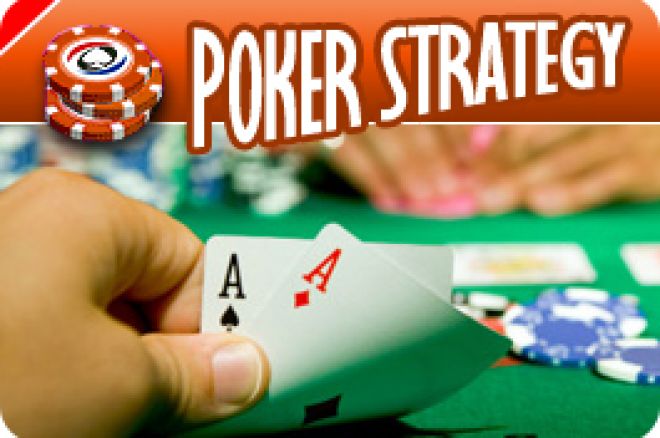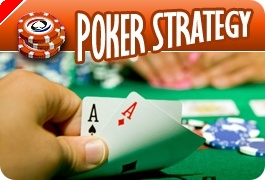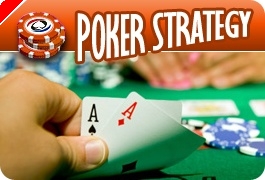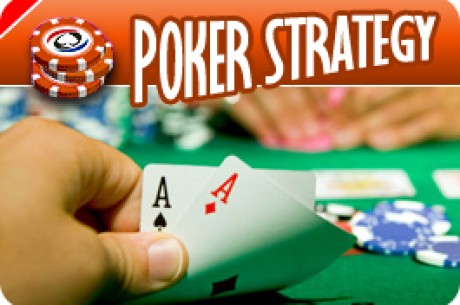Stud Poker Strategy �� Options in Fixed Limit Stud, Part II: Third Street

In my last column I dealt with betting options in limit stud on fourth street, covering the decision to bet the lower tier or the higher tier. In this column we'll look at betting options on third street, when there is a forced bet by the low card.
All public poker rooms incite action at the stud table by requiring the low exposed card on third street to initiate the betting. The amount they must bet, called the "force" or the "bring-in", is generally equal to between a quarter to a half of the lower tier of betting. So for example, in a $5/10 structured limit game, the forced bet is $2. In the $10/20 game it is generally $3. And in $20/40 it is $5. This bet is in addition to the requisite antes. It is an additional pot sweetener meant to simulate action.
Players with the forced bet actually have an option of betting either the forced bet amount or the full bet amount. So, for example, in a structured $5/10 limit game, the low exposed card may either initiate the betting for $2 or the full $5.
After a player initiates the betting with the bring-in, a raiser may only raise to the full bet amount �C known as a "completed bet". So, for example, if a player comes in for $2 in a $5/10 limit game, and the next player wants to raise, he may only do so by raising to $5. He cannot make it $7. (In some spread-limit games this is not the case. So, for example, in some $1-5 spread-limit games, the first raiser can make it $6.)
Once the bet has been completed on third street, all raises thereafter are by the lower tier amount. So, for example, if the bring-in is $2, and a player raises to $5, the next raiser must make it $10. If he is re-raised the bet goes to $15.
Players are free to call only the bring-in if they wish. But on fourth street and all streets thereafter, there is no forced bet. And so anyone initiating the betting must do so by the requisite amount.
Here are a few examples from a $5/10 game with a $2 forced bet (suits are not important to this lesson):
Mongo: (Q A) 2
Tinker: (8 6) 10
Baloo: (10 10) K
Synda: (K J) 3
Prike: (8 A) A
Mongo is the low card, with a deuce. He brings it in for $2.
Tinker has garbage and folds, rather than call the $2.
Baloo, with a pair of tens in the hole, decides to raise. He does so by completing the bet to $5.
Synda folds with nothing.
Prike, who has a split pair of aces, elects to re-raise. He makes it $10.
Mongo figures he's already in for $2. He calls the extra $8.
Baloo, though he figures Prike has a pair of aces, figures that he should call another $5. And so he does.
Let's look at a slightly different hand and see how the players might take advantage of their options:
Mongo: (A A) 2
Tinker: (8 6) 10
Baloo: (10 10) K
Synda: (K J) 3
Prike: (8 8) A
In this instance:
Mongo still has the exposed deuce and is forced to bet. But instead of betting just the forced bet of $2, he elects to come in for the full $5 since he has a pair of aces in the hole.
Tinker folds.
Baloo figures he has a better hand and so raises by the requisite $5.
Synda folds.
Prike, with a hidden pair of eights and an exposed ace, figures he may have the best hand. So he raises to $10.
Mongo, wanting to disguise the true strength of his hand, just calls the raise from Prike.
Baloo calls as well.
And finally, here's another hand that illustrates the complete set of options on third street:
Mongo: (Q A) 2
Tinker: (8 6) 7
Baloo: (10 A) K
Synda: (K J) Q
Prike: (8 8) A
Mongo brings it in for $2.
Tinker, having three to a straight, elects to call for $2.
Baloo, with three high cards, thinks about raising as a bluff but then realizes that he's unlikely to knock everyone out. He calls for $2.
Synda, with three to a straight and three high cards, also calls.
Prike, with a low concealed pair, also calls. Everyone calls the $2. No one raises.
On fourth street, however, anyone who wants to bet must bet $5 unless a pair is showing. And if you don't know what their options are then you must read the last column.
Here's a strategy consideration for you on third street. Most players �� the vast majority, in fact �� just toss in the bring-in without even looking at their down cards. They see that they have been dealt the low card and they automatically toss in the forced bet. I generally do this myself.
You might argue that I am giving up an opportunity to make a decision �C and therefore sacrificing some potentially profitable play. And you would be correct. However, I view my blind bet as a way of randomizing my behavior at the table. I don't look; and my opponents know I don't look. So I am sure that their action is not based on their read of my initial three cards.
Even so, some players do look at their down cards before tossing in the bring-in. And sometimes someone comes in for the full amount. What does this mean and how should the thoughtful player respond? Similarly, if one does look at his down cards before betting as the bring-in, what strategy considerations go into deciding which of the two bets to make?
It is far more likely that the player who comes in for the full bet has a split pair than that he has a wired pair in the hole. The fact that he is coming in for a large bet means, most of the time, that he has a split pair and a big kicker. Sometimes, a clever player may do this with a 3-flush �C hoping to get callers and not raisers, thus making the pot he is drawing for bigger. This improves the pot odds he is getting when he continues to draw for this card as the hand progresses.
The problem with this strategy is that he may well get raised by someone with an overpair �C or even by someone with big cards or an aggressive style who just wants to isolate him. Strong players may correctly believe that they can exercise control over this player with a likely split low pair �C and may be able to take the pot away from him if he doesn't seem to improve on fourth or fifth street.
Consider the following hand:
On third street, Player A, with a deuce exposed, bets the full percent in this $5/10 game with a $2 forced bet. Player B, immediately following player A, has a king exposed. It is the highest exposed card. He suspects Player A of having a pair of deuces with an ace kicker. He may also know that Player A tends to be a weak-tight player. Player B might well raise, without anything but the king. He would figure that everyone else without much of a hand will fold, leaving Player A. Player A may fold, fearing that he is against a much higher pair. Or he may call the raise, hoping to snag one of the two deuces or three aces yet to be played. Player B would then bet fourth street no matter what he got, presuming player A didn't get one of the hoped-for aces or deuces, and expect to pick up the pot. If Player A called on fourth, Player B could repeat this when the bets doubled on fifth with the same expectation.








